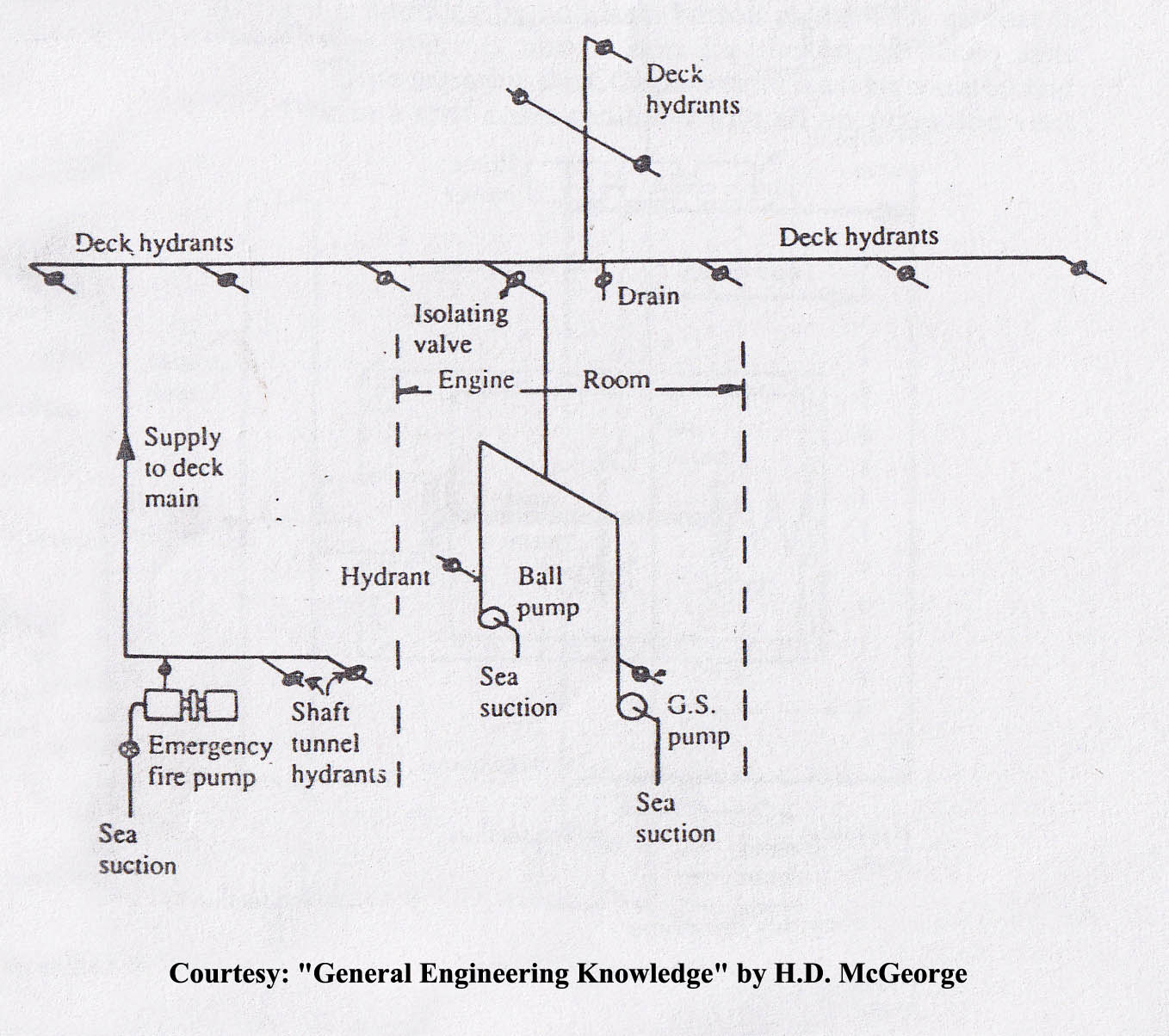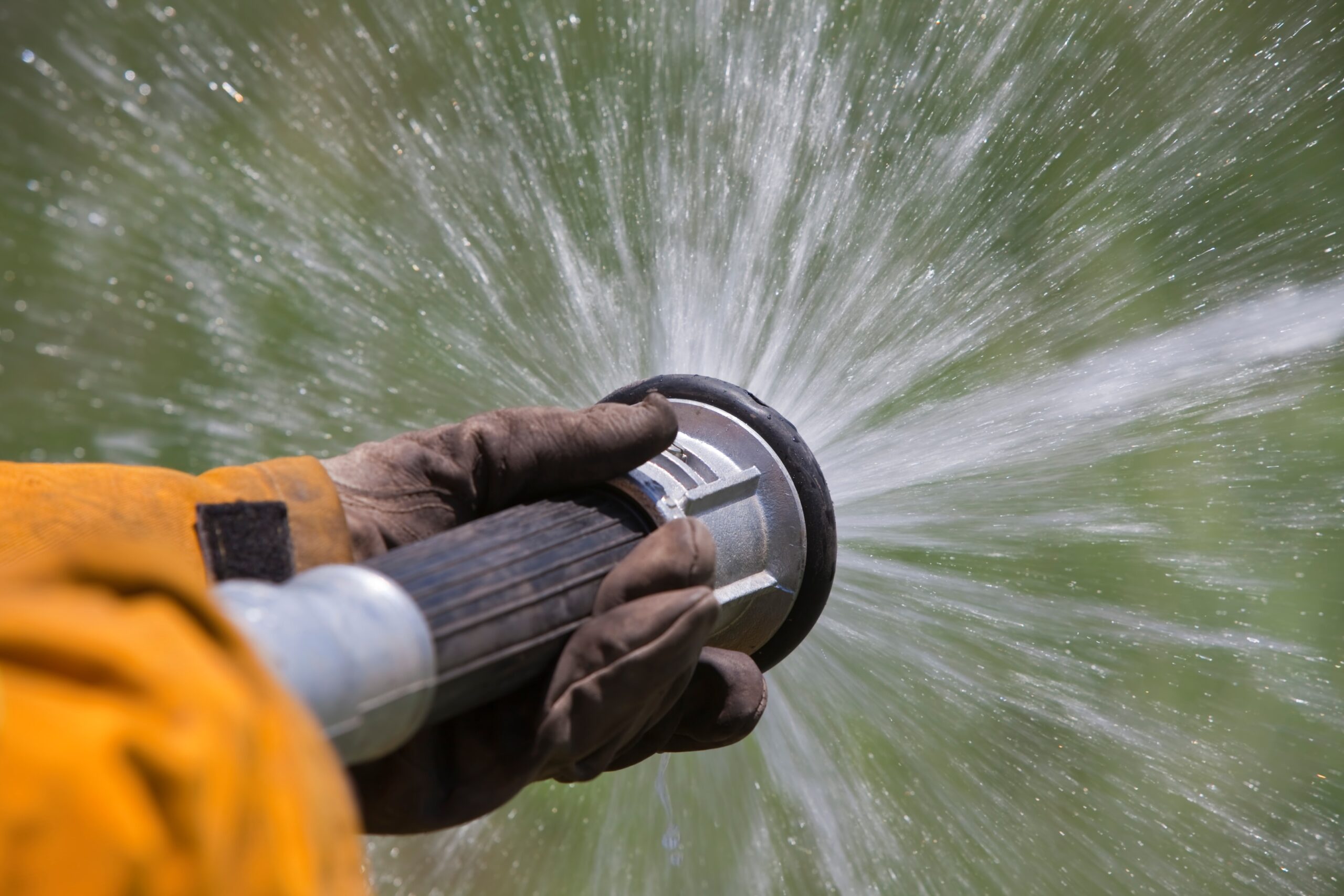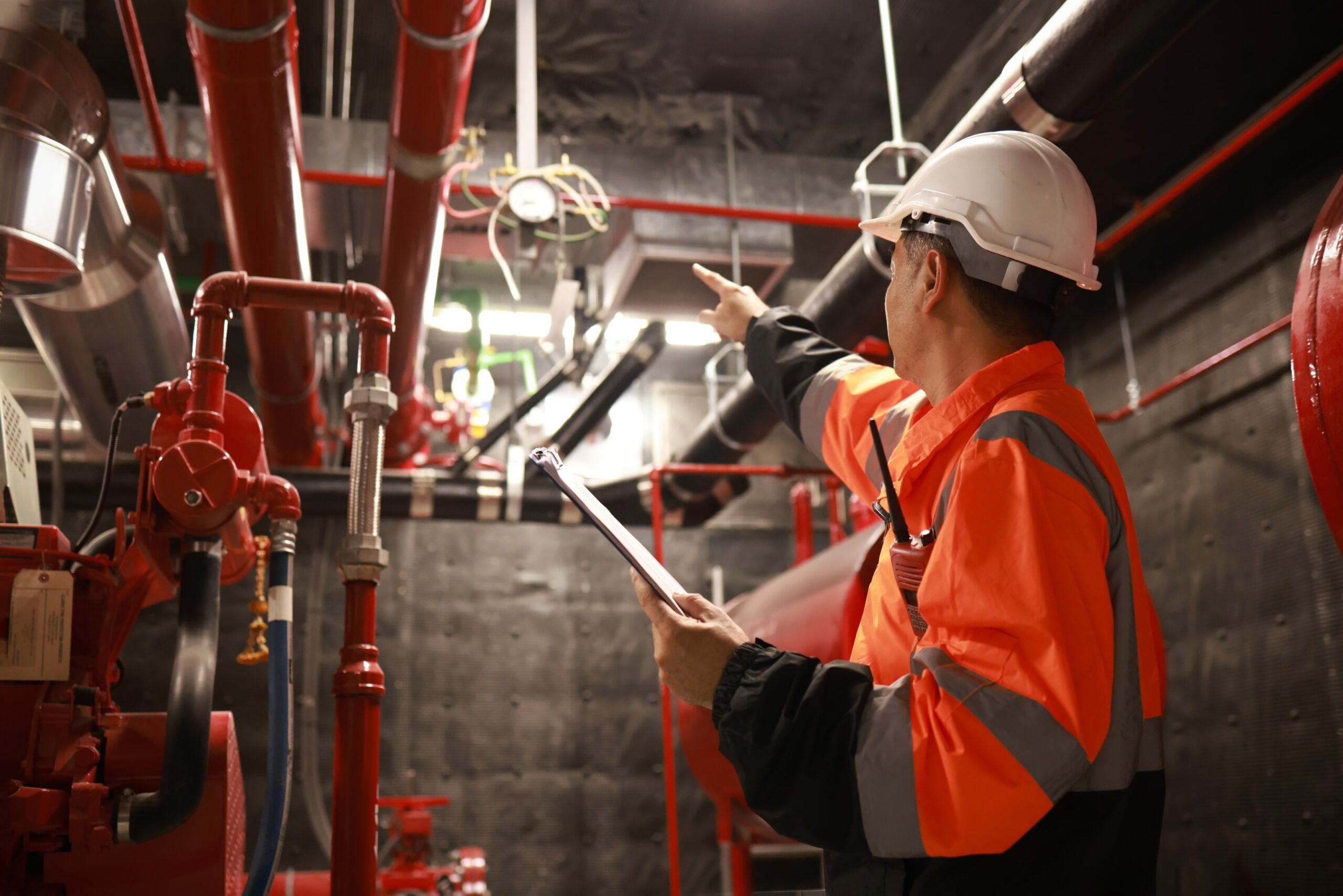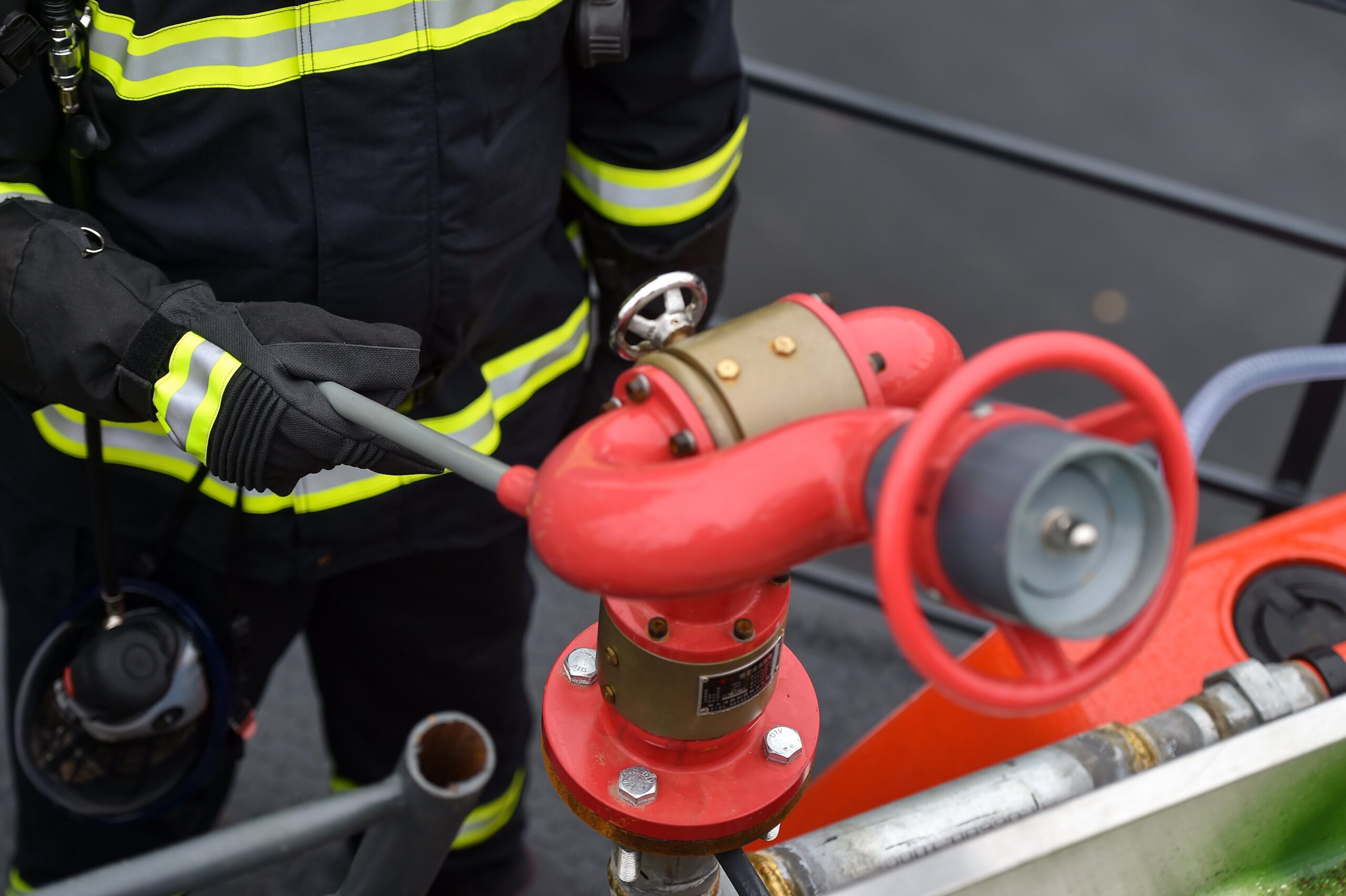Fire safety on ships is one of the most important aspects of maritime operations. With the constant presence of flammable materials, high temperatures in machinery areas, and confined spaces, the risk of fire is a serious concern. That’s why firefighting systems for ships are so important for every vessel’s safety framework. These various fire safety systems are designed to detect and combat fires before they can escalate, protecting the ship, its crew, and cargo. In this blog, we’ll take a closer look at the types of firefighting equipment on ships, their importance, and how crews are trained to handle fire emergencies.

What Are Firefighting Systems on Ships?
A shipboard firefighting system is a set of equipment and firefighting appliances designed to detect, control, and put out fires on board a ship. These systems are necessary for preventing a small fire from turning into a life-threatening emergency, especially when the ship is far from land and immediate assistance is unavailable. Firefighting equipment and systems are strategically installed across various areas of the ship, including the engine room, cargo holds, accommodation areas, and galley (kitchen) spaces.
The system typically includes smoke detectors, heat detectors, fire alarms, and suppression agents like CO2, foam, or water mist. Some ships also have advanced features like automated sprinklers, fire doors, or inert gas systems, which ensure rapid response to any fire threat.
Why Are Firefighting Systems Important?
Ships usually carry large quantities of flammable liquids like fuel oil, and machinery areas operate at high temperatures, increasing the chances of fire. Unlike buildings on land, ships are isolated at sea, which means that external help is hours, if not days, away. This makes it crucial to contain and extinguish fires quickly to avoid catastrophic consequences.
Here are a few reasons why firefighting appliances are essential:
Protection of Lives
The primary goal of firefighting systems for ships is to protect the lives of crew members. A well-maintained firefighting system can save lives by quickly containing a fire before it spreads to other parts of the vessel.
Prevention of Cargo Loss
Ships often carry valuable cargo, including dangerous goods that can exacerbate fire hazards. Proper firefighting equipment helps protect this cargo and prevent losses that could be financially damaging.
Compliance with International Standards
Ships are required to comply with international maritime and fire safety regulations, such as the Safety of Life at Sea (SOLAS) convention, which mandates that all vessels are equipped with adequate fire safety equipment and fire-fighting appliances.
Minimizing Damage to the Vessel
A fire can cause significant damage to the ship’s structure, machinery, and electrical systems. The quicker a fire is contained, the less damage will occur, which translates to saved lives, lower repair costs and reduced downtime.
Types of Firefighting Equipment on Ships

There are various types of firefighting equipment and systems for ships, each designed to target specific types of fires and areas where fires are likely to occur. Below is a list of some of the most commonly used firefighting equipment:
-
CO2 (Carbon Dioxide) Fire Suppression System
-
Foam Fire Extinguishing System
-
Water Mist System
-
Inert Gas System
-
Fire Detection Systems
-
Sprinkler Systems
-
Fire Main System
-
Fire Pumps
-
Fireman’s Outfit
-
Portable Fire Extinguishers
-
Fire Doors
-
Fire Blankets
CO2 systems are effective in enclosed spaces like engine rooms. They work by displacing oxygen in the area, effectively smothering the fire.
Foam systems are ideal for fires caused by flammable liquids, such as oil spills. Foam creates a barrier between the fire and the oxygen, stopping the fire from spreading.
This system uses fine water droplets to cool down the fire and reduce heat. It is particularly effective in machinery spaces.
Commonly used in oil tankers, this system fills cargo tanks with an inert gas like nitrogen, reducing the oxygen level and preventing a fire from igniting.
Smoke detectors and heat sensors are installed throughout the ship to provide early warnings of potential fires. They are usually linked to an alarm system, alerting the crew immediately.
Sprinklers activate automatically when a set temperature is reached, releasing water to control and extinguish the fire.

This is a network of pipes that supply water to fire hydrants and fire hoses strategically placed around the ship.
Fire pumps provide the water supply needed for firefighting. Ships typically have both main and emergency fire pumps to ensure redundancy.
Firefighters wear fire-resistant clothing, helmets, gloves, and boots, specially designed for crew members who are actively fighting fires.
Every ship is equipped with portable fire extinguishers for smaller fires. Different types are available depending on the fire risk, including CO2, foam, and dry powder extinguishers.
Fire doors are installed in critical areas to create compartments on the ship, helping to prevent the spread of fire and smoke. These are self-closing doors that ensure the containment of fire and smoke within specific sections of the ship.
Fire blankets are commonly found in shipboard kitchens and galley areas, where they are used to smother small fires, particularly those involving cooking oils and grease.
Training for Managing Fire Emergencies

Even with advanced firefighting systems in place, the human factor is essential in dealing with fire emergencies on ships. Crew members undergo rigorous training to ensure they know how to operate firefighting equipment and respond appropriately in case of a fire.
This training includes:
Fire drills: Regular fire drills are conducted to practice evacuation procedures and the use of fire fighting systems.
Operation of fire pumps and hoses: Crew members are trained to connect fire hoses to hydrants and operate fire pumps.
Use of fire extinguishers: Knowing which type of fire extinguisher to use for the different types of fires (e.g. electrical fires, oil fires) is critical.
Donning fireman’s outfits: Crew members assigned to firefighting duties are trained to wear fireman’s outfits quickly and safely.
Emergency escape routes: It’s important that crew members are familiar with all escape routes and emergency exits on the ship.
Quick Detection and Preventive Actions
One of the key advantages of firefighting systems for ships is their ability to detect fires early. Smoke and heat detectors are preventative measures and help with early detection, allowing fires to be addressed before they can escalate. This rapid response is crucial to reducing all types of fire-related damage and protecting the lives of crew members.
When a fire is detected, alarm systems are triggered, and automatic suppression systems, like CO or foam, are activated to contain the fire. This fast, automatic response suppresses fires and minimizes the need for human intervention, reducing the risk of injury or error during emergencies.

Conclusion
Firefighting equipment and systems for ships are a vital part of maritime safety. From early detection to suppression, these firefighting systems protect lives, cargo, and vessels from the devastating effects of fire. In addition to installing the right fire safety equipment, regular training and maintenance are crucial to ensuring that the crew and systems are always ready to respond to fire emergencies.
Investing in advanced firefighting equipment and ongoing crew training is not just about compliance, it’s about protecting lives and safeguarding the ship, its crew, and its valuable cargo, ensuring safe voyages and smooth operations.
FAQs
What are the most common causes of fires on ships?
Common causes include electrical malfunctions, engine room fires, and improperly stored flammable materials.
How often should firefighting systems on ships be inspected?
Firefighting systems should undergo regular maintenance and inspections, typically every six months to one year, depending on regulations.
Can fires spread quickly on ships?
Yes, due to the confined spaces and presence of flammable materials, small fires can spread rapidly if not controlled immediately.
Are crew members required to be trained in firefighting?
Yes, all crew members must be trained in firefighting procedures and participate in regular fire drills to ensure they are prepared for emergencies.
What is the role of a fire main system on a ship?
The fire main system supplies water to fire hydrants and fire hoses, providing the primary source of water for firefighting efforts onboard.

Leave a Reply